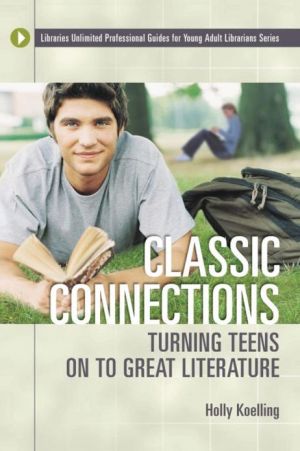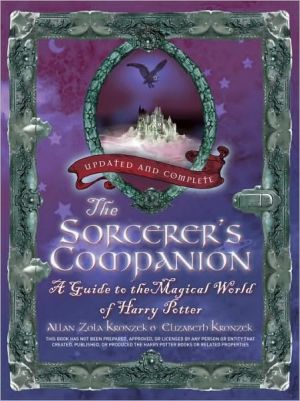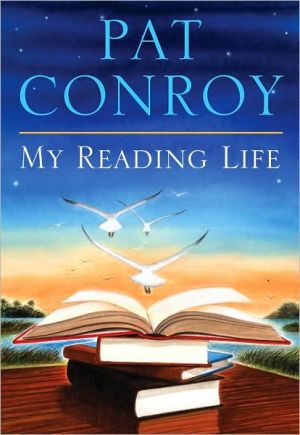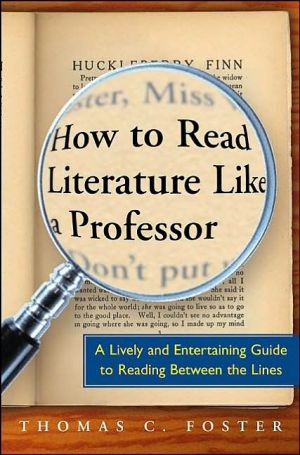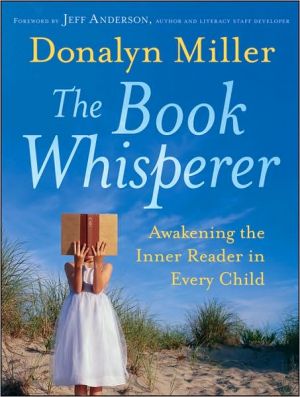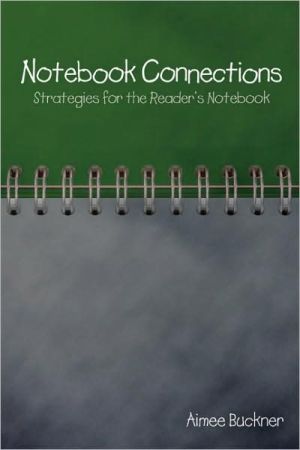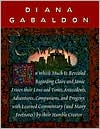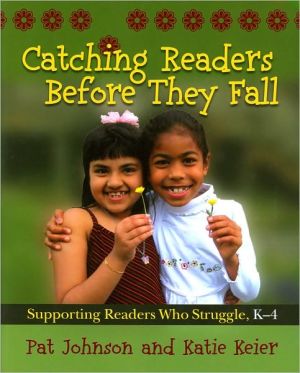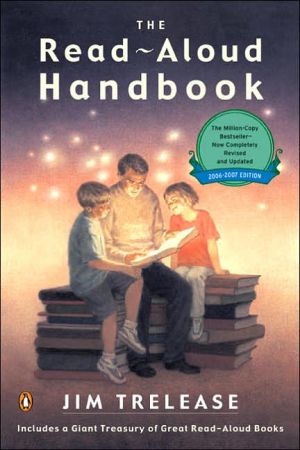Classic Connections: Turning Teens on to Great Literature (Libraries Unlimited Professional Guide for Young Adult Librarians)
Getting teens to read, much less enjoy classic literary fiction is an on-going challenge for educators and librarians. However, Holly Koelling—author, YA librarian, and booktalker extraordinaire-offers a variety of techniques for rising to that challenge and successfully selecting, presenting, and connecting teens with great literature in the library and in school. This book defines classics and discusses why they are important, then provides a step-by-step process for finding the hooks that...
Search in google:
This guide for librarians and educators presents practical suggestions for connecting young adults (ages 12-18) with classic literature. Ten chapters address such topics as displaying a classics collection, forming book discussion groups, and delivering successful "booktalking" presentations. An appendix contains an eclectic mix of short classics lists to meet special interests, divided into fiction and nonfiction categories. Koelling (King County Library System, Washington) is a reviewer for Booklist. Annotation ©2004 Book News, Inc., Portland, ORPaula Rohrlick - KLIATTKoelling, a YA/Reference Librarian at Washington's Bothell Regional Library, maintains that classics are "the cream of the literary crop," of great value to teens today and not "musty, old irrelevant tomes." She not only makes a strong case for connecting teens with these time-tested works but also explains how to do it. The first section of the book, Laying the Groundwork, tackles "What Are the Classics and What's in Them for Teens?" with suggestions for reading the classics oneself, understanding teens as people and as readers, and finding and combining classics to attract teen readers. Part Two, Making It Happen, focuses on developing, maintaining, and displaying a classics collection for teens, becoming a classics readers' advisor, fitting classics into teen reading programs, booktalking (with sample booktalks), and promoting classics in schools and communities. Many reading lists are included, and appendices include an annotated list of free, full-text classics online; an annotated list of resources about classics and the canon; fiction and nonfiction classics lists; and a reference list by genre. Koelling's definition of a classic is refreshingly broad, going beyond the usual "dead white male" authors to include, for instance, lists of gay and lesbian classics, classic novels by and about women, and the American and world ethnic experience in classic novels, as well as references to resources on writers of various ethnicities, culture groups, and gender views. There is also a section on challenged and banned classics. Koelling's enthusiastically presented ideas and her many helpful lists (e.g., "high-interest, easy-access thin classics") will be valuable to both school and public YAlibrarians. KLIATT Codes: P*—Exceptional book. 2004, Libraries Unltd, 405p. bibliogs. index., Ages adult.
1What are the classics and what's in them for teens?32Get to know the classics - read!273Understand the classics without a Ph.D.494Make sense of teens as growing people and as readers735Find and combine classics to attract teen readers1036Develop, maintain, and display your classics collection for teens1517Be a successful classics readers' advisor with teens in your library or school1698Fit classics into teen reading programs and other activities2159Booktalk the classics to teens24710Promote the classics in schools and your teen community289App. AAn annotated list of free, full-text classics online311App. BAn annotated list of resources about classics and the canon317App. CMore classics lists, fiction and nonfiction321
\ KLIATTKoelling, a YA/Reference Librarian at Washington's Bothell Regional Library, maintains that classics are "the cream of the literary crop," of great value to teens today and not "musty, old irrelevant tomes." She not only makes a strong case for connecting teens with these time-tested works but also explains how to do it. The first section of the book, Laying the Groundwork, tackles "What Are the Classics and What's in Them for Teens?" with suggestions for reading the classics oneself, understanding teens as people and as readers, and finding and combining classics to attract teen readers. Part Two, Making It Happen, focuses on developing, maintaining, and displaying a classics collection for teens, becoming a classics readers' advisor, fitting classics into teen reading programs, booktalking (with sample booktalks), and promoting classics in schools and communities. Many reading lists are included, and appendices include an annotated list of free, full-text classics online; an annotated list of resources about classics and the canon; fiction and nonfiction classics lists; and a reference list by genre. Koelling's definition of a classic is refreshingly broad, going beyond the usual "dead white male" authors to include, for instance, lists of gay and lesbian classics, classic novels by and about women, and the American and world ethnic experience in classic novels, as well as references to resources on writers of various ethnicities, culture groups, and gender views. There is also a section on challenged and banned classics. Koelling's enthusiastically presented ideas and her many helpful lists (e.g., "high-interest, easy-access thin classics") will be valuable to both school and public YAlibrarians. KLIATT Codes: P*—Exceptional book. 2004, Libraries Unltd, 405p. bibliogs. index., Ages adult. \ —Paula Rohrlick\ \ \ \ \ VOYAGetting teens to read classics has been described by some as the literary equivalent of pulling teeth. This new addition to the Libraries Unlimited Professional Guides for Young Adult Librarians series disputes that belief and provides a wealth of information for educators and young adult librarians who believe that teens and classics are not necessarily incompatible. The book is divided into two sections: Laying the Groundwork and Making it Happen. The first section covers the essential elements that define a book as a classic, reviews adolescent development and reading habits, and discusses what types of classics have teen appeal. The second section contains a discussion of collection development, readers' advisory, programming, booktalking, and promotion of the classics. At the end of each chapter, there is a summation, a bibliography of works cited, and lists of additional resources. At the end of the book are three appendixes and nine reference lists with useful information related to the classics canon. This extraordinarily detailed guide is a wealth of resources and excellent advice, but at such a length, it is more a comprehensive textbook than a quick reference for busy librarians seeking tips on connecting teens to classics. Because the author targets as her intended audience both educators and librarians, some segments of the book cover material with which most librarians are already familiar. Despite the broad scope of the book and the daunting amount of information to digest, however, it is a valuable book for anyone trying to connect teens to classic literature. 2004, Libraries Unlimited, 405p.; Index. Biblio. Source Notes. Further Reading. Appendix., $40 pb. Ages adultprofessional. \ —Jan Chapman\ \ \ School Library JournalThis extensive discussion and guide to classic literature will be a highly sought resource for public and secondary school librarians seeking to rejuvenate collections with modern classics, to develop captivating booktalks on popular themes, or to create enticing displays matching books with favorite YA titles, films, or modern sequels. Filled with annotated bibliographies and concrete examples, chapters address adolescent psychology, program ideas to hook teens, strategies for matching their interests with appropriate titles, and suggestions to help teachers liven up "tired" reading lists. Including nonfiction, poetry, drama, myths, legends and short stories, the titles listed cover multiple interests and ability levels. Updating and expanding Hazel Rochman's Tales of Love and Terror: Booktalking the Classics, Old and New (ALA, 1987; o.p.), Koelling has a conversational style that is inviting, and her selection of materials is superb. For teachers and librarians who wish to challenge readers to engage their minds and discover the universality of outstanding literature, this book is a must-read.-Kathy Lehman, Thomas Dale High School Library, Chester, VA Copyright 2005 Reed Business Information.\ \
